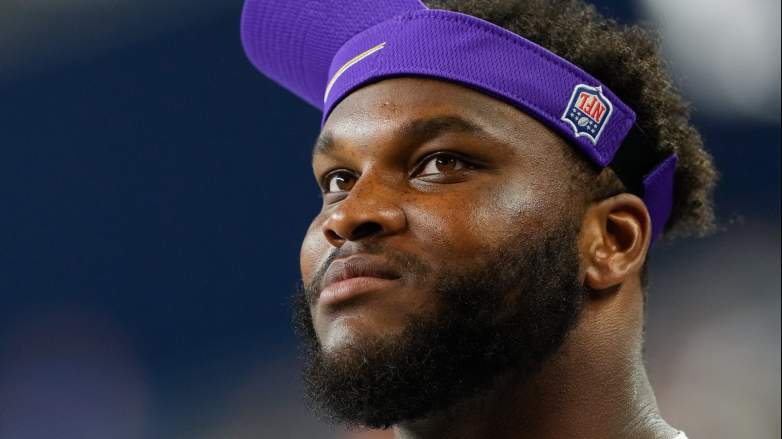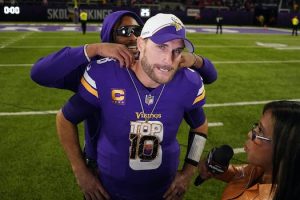
Guard Dalton Risner was a long-awaited addition to the Minnesota Vikings during the midseason, as demanded by the team’s supporters; nevertheless, his stay in Minnesota may already be over.
Former offensive tackle for the Vikings Jeremiah Sirles, who is currently an NFL agent, believes that Risner’s 2023 performance will earn him a big contract that will probably cost the Vikings nothing when he hits free agency in March.
In a January 23 episode of the “Purple Insider” podcast, Sirles stated, “I think he played well enough; he’s going to want a bigger contract,” and that Minnesota should let Risner depart because there are more urgent needs on the squad.
Three weeks into the season, the Vikings signed 28-year-old Risner to a one-year, $3 million contract. Earlier in the season, they had let Risner walk after his visit to training camp in early August.
In 12 games, Risner—a highly sought-after pass-protector—did not give up a sack on 485 pass-blocking snaps. According to Pro Football Focus (PFF), Risner is expected to sign a three-year, $24 million contract for $15 million guaranteed and $8 million on average per season.
Prior to Kirk Cousins suffering a season-ending Achilles injury, Risner’s signing was a risk-taking action that helped the team earn the second-best aggregate pass-blocking grade in the NFL.
Dalton Risner Left His Hometown Broncos to Bet on Himself Last Year. Dalton Risner Getty Dalton Risner in Seattle on September 12, 2022.
Following four seasons with the Denver Broncos of his home state, Risner took a risk in free agency and was unwavering in his refusal to accept a deal that fell short of his asking price.
Because of this, Risner hesitated to sign a free agent contract once the season began, even though he had visited the Vikings on August 1. Ed Ingram and Ezra Cleveland, the starting guards, learned a valuable lesson from that visit.
The Vikings did not start Risner even after he signed until Cleveland suffered an injury prior to Monday Night Football’s Week 7 game against the San Francisco 49ers. In a 22-17 victory, Cousins completed 35 of 45 passes (77.8%) for 378 yards, two touchdowns, and an interception thanks to the unsack-free performance of Risner and the rest of the offensive line.
Two weeks later, during the trade deadline, the Vikings acquired a sixth-round pick from the Jacksonville Jaguars in exchange for Cleveland, who was in the last year of his rookie contract.
Although Cleveland, a 2020 second-round pick, is a player Minnesota probably didn’t plan to re-sign, the team will once more have concerns about its interior offensive line this offseason.
Risner is probably going to take a chance on himself in free agency once more in an effort to land a big deal while still in his prime.
Vikings Offensive Line Competition Ahead

Right tackle Brian O’Neill and left tackle Christian Darrisaw, who continue to be mainstays at their respective positions, are the Vikings’ offensive line bookends.
The Vikings had one of the best pass-blocking units in the league, but they had trouble controlling the run game in the second season. The inside offensive line requires improvement because neither Garrett Bradbury’s new contract nor Ingram’s second season were encouraging.
The Vikings lack the financial means to completely rebuild the line, and neither player is close to being removed from the team.
Though they may be depth players this season, the Vikings should try to establish competition on the interior offensive line with a combination of veterans and Day 2 developmental draft picks who will be serious contenders to challenge Bradbury or Ingram in the future.








